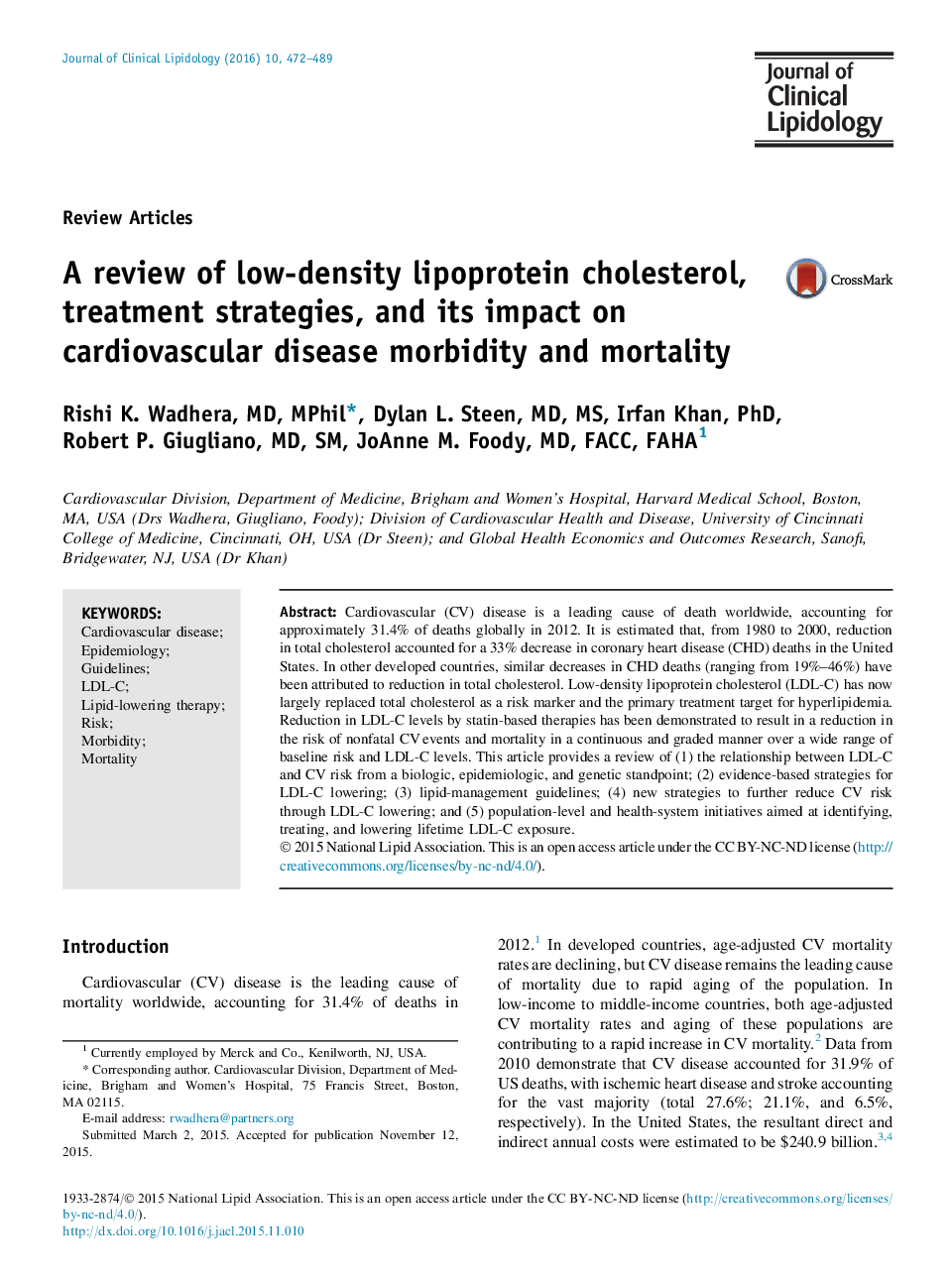| Article ID | Journal | Published Year | Pages | File Type |
|---|---|---|---|---|
| 5985294 | Journal of Clinical Lipidology | 2016 | 18 Pages |
â¢Hypercholesterolemia represents the highest population attributable risk factor for CHD.â¢LDL-C remains the primary treatment target for reduction of ischemic events.â¢Intensive statins and statin/ezetimibe are proven for secondary prevention.â¢Treatment of LDL-C to <50 mg/dL is being tested with novel therapies.â¢Public policies are needed to shift-down the whole population LDL-C distribution.
Cardiovascular (CV) disease is a leading cause of death worldwide, accounting for approximately 31.4% of deaths globally in 2012. It is estimated that, from 1980 to 2000, reduction in total cholesterol accounted for a 33% decrease in coronary heart disease (CHD) deaths in the United States. In other developed countries, similar decreases in CHD deaths (ranging from 19%-46%) have been attributed to reduction in total cholesterol. Low-density lipoprotein cholesterol (LDL-C) has now largely replaced total cholesterol as a risk marker and the primary treatment target for hyperlipidemia. Reduction in LDL-C levels by statin-based therapies has been demonstrated to result in a reduction in the risk of nonfatal CV events and mortality in a continuous and graded manner over a wide range of baseline risk and LDL-C levels. This article provides a review of (1) the relationship between LDL-C and CV risk from a biologic, epidemiologic, and genetic standpoint; (2) evidence-based strategies for LDL-C lowering; (3) lipid-management guidelines; (4) new strategies to further reduce CV risk through LDL-C lowering; and (5) population-level and health-system initiatives aimed at identifying, treating, and lowering lifetime LDL-C exposure.
